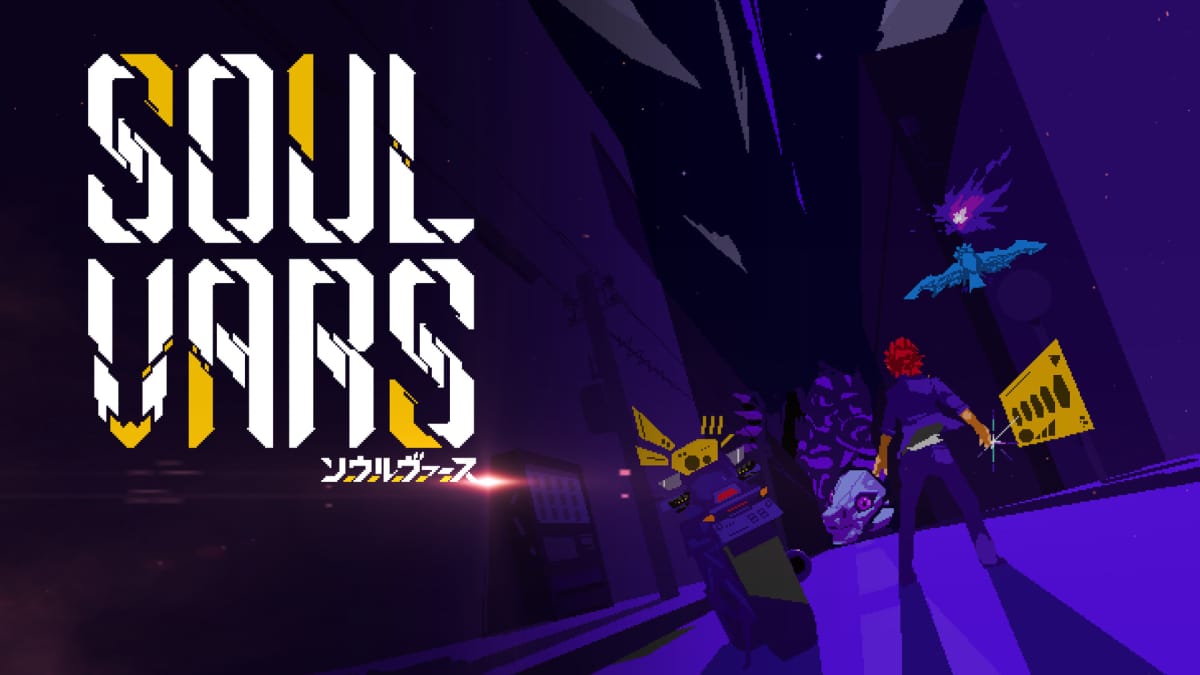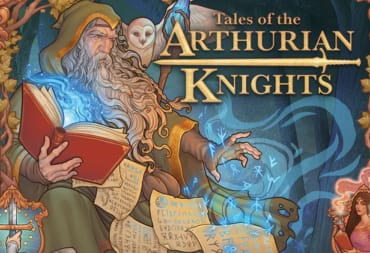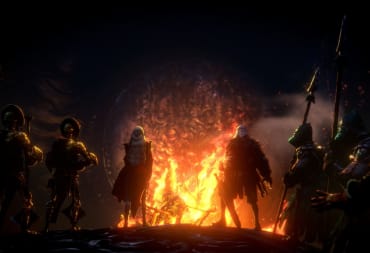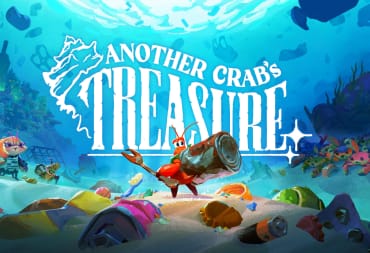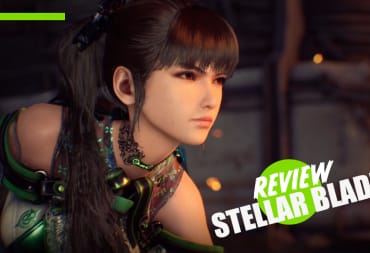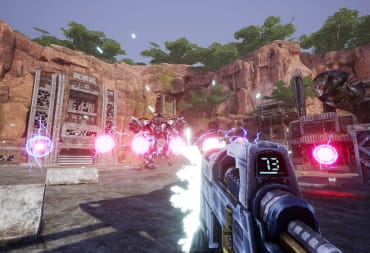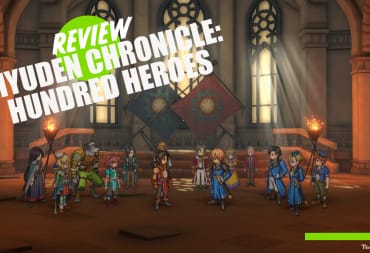It’s easy to consider pretension as nothing but a net negative, especially when you’re uncertain of what you’re dealing with. Not knowing exactly where the path will take you is certainly a fear-inducing concept, but at the same time, when the light is shown, it’s always gratifying to know you’re able to be surprised. If anything, SOULVARS is a creation that exercises this with admirable finesse.
This is the debut game from solo Japanese developer Ginolabo, originally released on iOS and Android in 2022, to a modest but nonetheless positive reception. Together with the gaming branch of manga publisher Shueisha (Known for publishing Chainsaw Man and One Piece in Japan), the deck-building RPG has made its way to consoles and PC. Not only that, but these ports have also seen their HUD and graphics revamped and polished from their smartphone counterparts.
You play as Yakumo, a freelance “Soulbearer” contracted by PMCs to deal with the threat of Dominators, technological beasts who’ve adapted and evolved through human advancements into digitizing souls. Together with fellow Soulbearers Izuna and Hizume, you’re tasked with eliminating Dominators sprouting around Suzaku City, as well as dealing with the shadowy organization Izanami, who’s in cahoots against your contractor.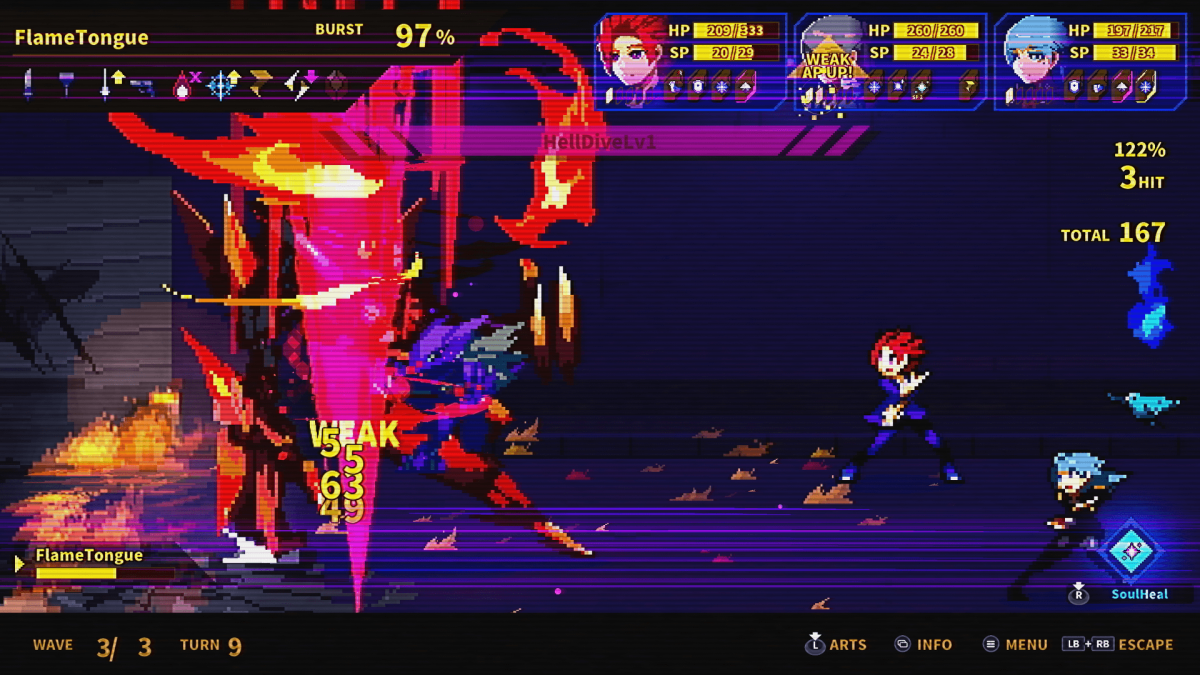
Despite my explanation of the story, you’d be fairly hard-pressed to deduce this information yourself through cut-scenes. Whether it’s due to its original release on mobile or otherwise, cutscenes are scanty when it comes to providing context, with most dialogue consisting of 3-word responses that very briefly mention plot elements. It’s an exceptionally impenetrable narrative, one which I struggled with, even with SOULVARS’ inclusion of a glossary and instruction manual.
It’s the kind of story that can get in the way of gameplay, with that same scanty nature bleeding into mechanical presentation. The pace of SOULVARS is breakneck, blisteringly fast in battles, animations, and the general agency with which the game demands of the player at all times. There’s barely a moment to think, and the same context missing for story beats can show up when trying to figure out exactly what the game is trying to present.
Words will fly past you, like “Soulbits” or “Alternations”, and while the aforementioned glossary can clear the air regarding them, SOULVARS still does a terrible job of outwardly explaining stats to you. Like any RPG worth its salt, your characters will have Attack, Defense, and Speed stats that you can grow and boost with certain items and upgrades. At the same time, it fails to relay what monsters are hurt by which stats, especially when it comes to attributes like “PSY” and “TEC”.
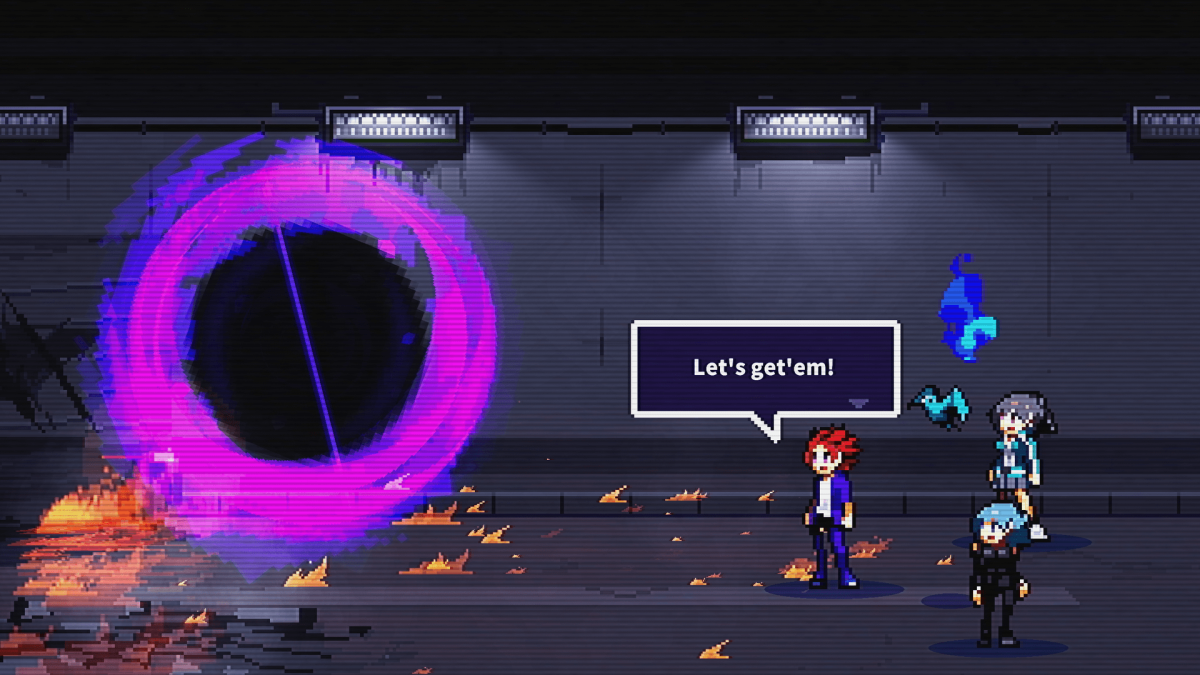
It’s hard to explain what SOULVARS is, past the genre tags and its use of deck-building mechanics. Whether it’s an auteur vision or a thorough tribute of Ginolabo’s favorite titles, there’s an execution to it that brings to mind the Flash games of yesteryear, and that’s not a detriment. The energy is electric, and the actual direction is sincere, both narratively and visually – it feels like a game using the developer’s excitement as a resource.
With that said though, the game’s outward layer of making the player second-guess quickly decays once you realize the depth of combat. Each turn, you’re given five cards to try and mix n’ match combos, both offensively and defensively, choosing attacks that enemies will be weak to, or successfully dodging or blocking a move made by your opponent. Every buff, debuff, block, dodge, and critical hit, will be more energy for you to use next turn, and honestly? Watching this mechanic be exercised in-game is exhilarating.
It’s a risk/reward management system that becomes an addicting endorphin rush, playing into the more myopic aspects of a card game. There’s more than a fat handful of skills and combos available for each party member to use, and luck becomes less of a requirement than it is a bonus. Even if you block with one character and the enemy doesn’t target you, it will still account for the block next turn, a metaphorical wall from which you can attack behind cover.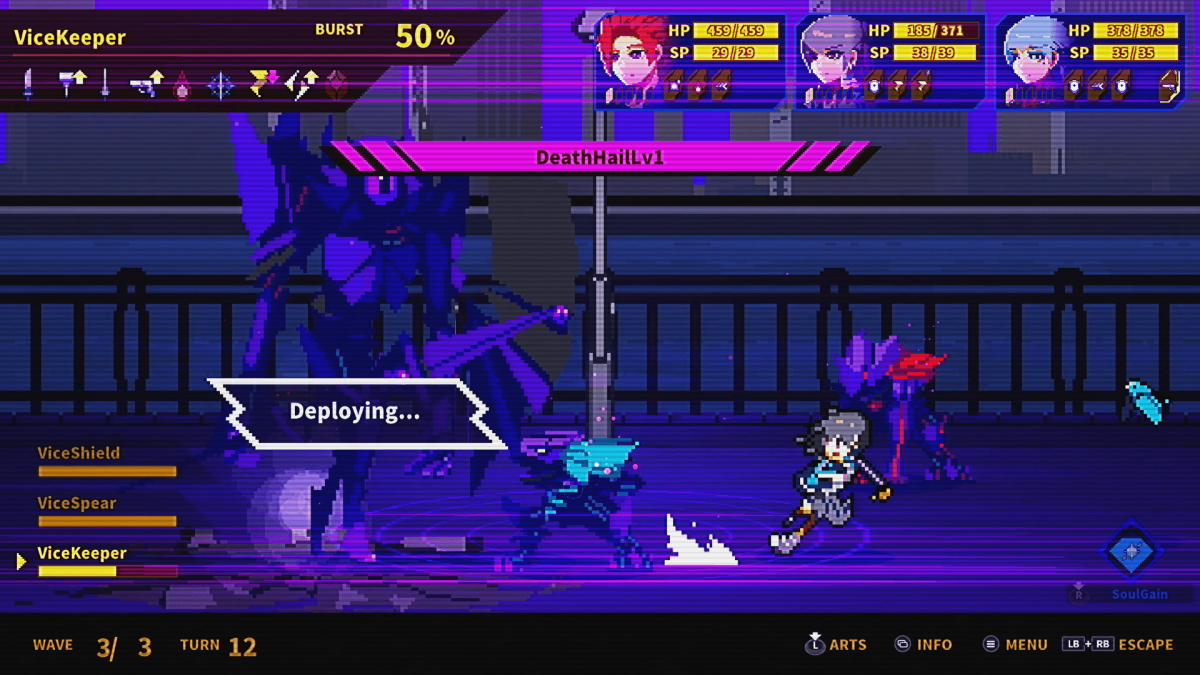
Is it easy? Yes, and honestly, this is where SOULVARS could’ve used a little tweaking. It’s an inconsequential breeze for large parts of the game, even when boss fights show up with some fairly intimidating resistances to basic attacks. On that note, when the game does decide to show up with a beast worth its weight in a fight, the stats are skewed so far back in your favor that it becomes a slog. While it’s more painless than painful, difficulty is something that SOULVARS struggles with, even on harder modes.
Still, despite its initial complexity, through obscurity or otherwise, SOULVARS is the kind of game where you can turn your brain off and just watch the sparks fly. Despite a visual direction consisting largely of purple and yellow, the actual flair with which attacks are displayed is uniquely beautiful. The super-speedy animations of characters imply a fight that’s over in the blink of an eye, the products of demigods more than just “evolved humans”.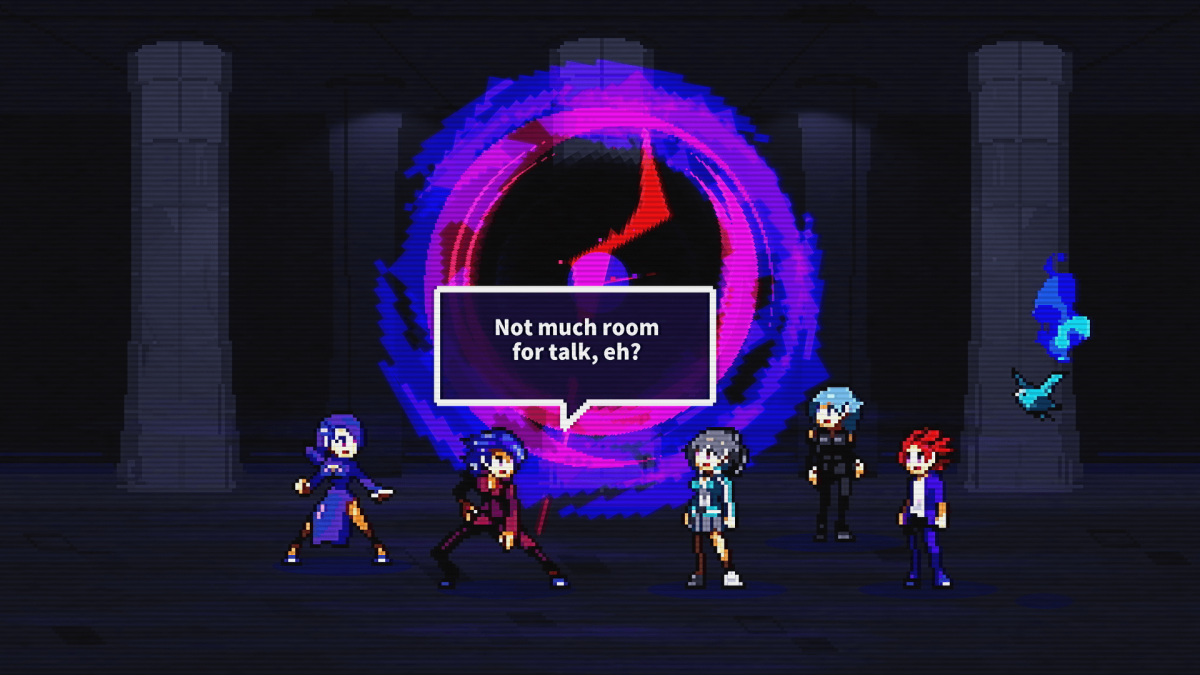
Bear in mind that these are demigods that you can always mold into any facet of fighter. Different weapons and outfits with cards attached are just one angle of customization, you also have their “Souldriver” to worry about; interchangeable devices that you equip and level up instead of the character themselves. As your sync rate increases with these Souldrivers, you have the opportunity to unlock more stat boosts, combo attacks, and what is tantamount to a completely different build with each Souldriver.
Honestly, the biggest sin of SOULVARS is its lack of context, but even that wouldn’t make a confession. Again, you can tell this is a game that Ginolabo was just so happy and excited to be making, and what strengths SOULVARS – the flair, the fluidity, the feel and the fascination stemming from its ludicrously dense narrative – are signs of blind passion more than foolish oversights. They know how to have fun, they know how to show it, and the result? The product of a 70-hour RPG that you can finish in 15.
I couldn’t ask for more, personally.
TechRaptor reviewed SOULVARS on Xbox Series S, using a copy provided by the publisher over the course of 15 hours of gameplay - all screenshots were taken during the process of review.
Review Summary
Pros
- Mechanically balanced to a mirror shine
- Confident aesthetical presentation
- Exhilarating fights with relentless pacing
- Customization of characters stats is incredibly in-depth
Cons
- Difficulty could've been tweaked better
- Narrative is almost completely negligible
- In-game glossary is missing a few explanations
Have a tip, or want to point out something we missed? Leave a Comment or e-mail us at tips@techraptor.net
